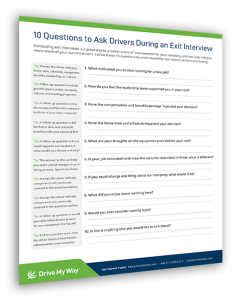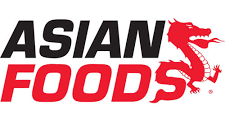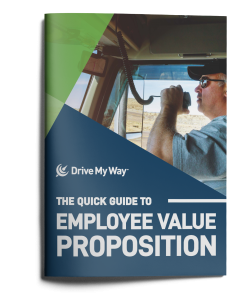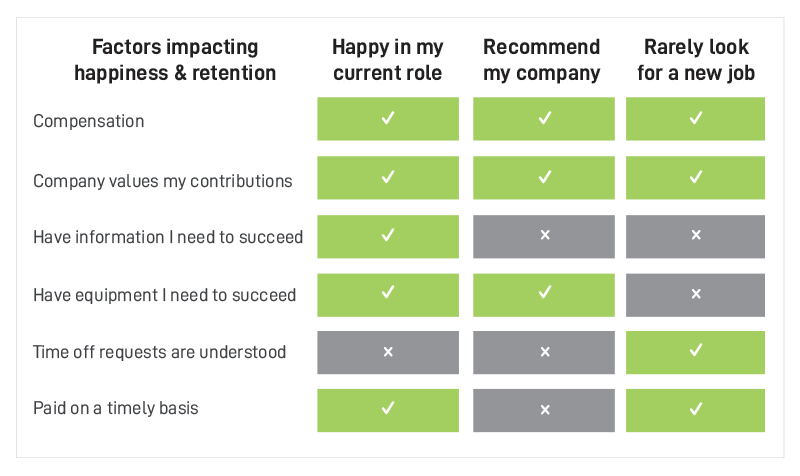 Almost every carrier has some sort of Facebook presence by now. Whether that Facebook presence is actively helping you reach drivers is the bigger question.
Almost every carrier has some sort of Facebook presence by now. Whether that Facebook presence is actively helping you reach drivers is the bigger question.
With Facebook by far being the most popular social media site with truck drivers, carriers who are looking to recruit quality drivers shouldn’t be overlooking it. Aside from using it to connect with family and friends, truck drivers use Facebook as a tool to connect with other drivers, stay up to date on the industry, and learn about different carriers. Here are 4 ways that your carrier can get the most out of Facebook.
1. Post Your Open Jobs
For carriers looking to reach more drivers and eventually recruit said drivers, posting their open positions is the obvious thing to do. You’ll want to let your network know when you have an open position on your fleet.
When posting your open jobs, make sure to include the high-level things that will catch a driver’s attention, like route, pay range, and location. Then you can include a CTA that will direct them to your job posting for more information.
Of course, if your Facebook audience is very small, you’re not going to reach a lot of drivers. If this is the case, you can read further down for some tips on how to build a Facebook audience. If you’re looking to recruit drivers now and can’t wait that long, consider aligning with a recruiting partner that can help your job ads reach a new audience.
2. Utilize Facebook Groups
Aside from just posting to their individual Facebook feeds, trucks drivers will often join groups that are specific to truck drivers. In these groups, they share advice with other drivers, tell stories about their time on the road, and post leads about new jobs.
As a carrier, you can do some digging to find active truck driver groups and post your jobs there. This will help you reach a new drivers without doing all the legwork of building an organic audience.
Keep in mind that not all Facebook groups will let carriers post in them. Some have privacy settings that only allow active members to post in them. Also, before you post in these groups, make sure that you’re ready to answer any questions that drivers may have and ready to respond to any negative feedback.
3. Create Fun Content
When it comes to creating a Facebook following, the number one, time-tested way is by creating content that people want to see.
This doesn’t mean that you’ll have to pull out the video camera and create a daily vlog or do top 10 lists once a week. It just means that you’ll have to use your Facebook for more than just posting your open positions.
So, what does count as “fun content”? Think about sharing posts about what’s happening at your carrier. Are you holding an event soon for drivers and their families? Snap a few photos and post them to your Facebook page.
Memes are also another great way to get drivers to engage with your carrier. Posting these relatable pictures or videos can show drivers that your carrier has some personality and will make them more likely to engage with your posts, and even consider your carrier the next time they’re on the job hunt.
View this post on Instagram
You can do a quick Google search for trucking memes, or you can even try your hand at making your own if there’s someone in the office with some extra free time.
4. Post Why Drivers Should Work for Your Carrier
No matter what a recruiter, HR employee, or other company representative tells a driver about a carrier, they’ll always take it with a grain of salt. This is especially true for drivers who have been around the industry for some time and have been let down by carriers in the past.
This is where driver testimonials come in. A driver testimonial is a short video or quote from a driver where they talk about what they enjoy about working for your carrier.
These testimonials could be as simple as gathering quotes from your current drivers about why they like working for your carrier, and creating a graphic around it, or it can be as ambitious as making a short video of your drivers speaking freely on what they enjoy about the job with your carrier.
Once you’ve made your testimonial, share it on Facebook. This will help grow your audience and show drivers that your carrier can back up what they say.

 Comprehensive CDL Recruitment Solutions
Comprehensive CDL Recruitment Solutions

 The most important part of strong communication with drivers is good listening. This means you actually take time and effort to hear drivers’ concerns and then address them. Good listening isn’t just reactive. Don’t just wait for drivers to come to you with their concerns. Be curious enough to inquire about their needs and questions.
The most important part of strong communication with drivers is good listening. This means you actually take time and effort to hear drivers’ concerns and then address them. Good listening isn’t just reactive. Don’t just wait for drivers to come to you with their concerns. Be curious enough to inquire about their needs and questions. Sometimes, the medium is the message. Choosing the proper communication method can make the difference between having successful conversations with drivers or leaving them frustrated. Some issues are too long or complicated to discuss over text or email. Calling drivers’ cell phones is the most popular way to communicate with drivers for a good reason.
Sometimes, the medium is the message. Choosing the proper communication method can make the difference between having successful conversations with drivers or leaving them frustrated. Some issues are too long or complicated to discuss over text or email. Calling drivers’ cell phones is the most popular way to communicate with drivers for a good reason.
 This one cannot be overstated. None of your communication strategies and methods are going to work if drivers don’t feel that you’re treating them with respect.
This one cannot be overstated. None of your communication strategies and methods are going to work if drivers don’t feel that you’re treating them with respect.



 It’s not breaking news that print media is on the decline. While ads in newspapers and magazines may have been the primary advertising channel decades ago, readership has gone down significantly.
It’s not breaking news that print media is on the decline. While ads in newspapers and magazines may have been the primary advertising channel decades ago, readership has gone down significantly.  You’ve seen these ads everywhere: Ones with 20-30 bullets listing out every facet and minute detail of a job. But the more information available for prospective hires, the better, right? Think again. In that very early stage of the job search, driver candidates are usually just looking for a few pieces of key information so they can decide if they want to learn more about the position.
You’ve seen these ads everywhere: Ones with 20-30 bullets listing out every facet and minute detail of a job. But the more information available for prospective hires, the better, right? Think again. In that very early stage of the job search, driver candidates are usually just looking for a few pieces of key information so they can decide if they want to learn more about the position.  To simply call social media popular anymore is a gross understatement. It’s become so entwined with people’s lives that we almost can’t imagine life without it. This is why it’s important for carriers who are looking to reach more drivers through their job ads to build up a presence on these social media sites.
To simply call social media popular anymore is a gross understatement. It’s become so entwined with people’s lives that we almost can’t imagine life without it. This is why it’s important for carriers who are looking to reach more drivers through their job ads to build up a presence on these social media sites.  Like most everyone, truck drivers are all over social media. It’s where they connect with other drivers, share tips for being on the road, and discuss current happenings. It’s also where they look for jobs and research carriers.
Like most everyone, truck drivers are all over social media. It’s where they connect with other drivers, share tips for being on the road, and discuss current happenings. It’s also where they look for jobs and research carriers. 



 At this point, the trucking shortage has become the normal state of things. It’s widely understood that the demand for truck drivers is much higher than the supply of drivers looking for jobs. Because of this, trucking companies are doing whatever they can to keep current drivers happy and bring new ones onboard. This includes pay increases, newer trucks and equipment, increased home time, and more.
At this point, the trucking shortage has become the normal state of things. It’s widely understood that the demand for truck drivers is much higher than the supply of drivers looking for jobs. Because of this, trucking companies are doing whatever they can to keep current drivers happy and bring new ones onboard. This includes pay increases, newer trucks and equipment, increased home time, and more.







 Ghosting is when a person stops responding and
Ghosting is when a person stops responding and 
 There are two big reasons that drivers are ghosting recruiters more than ever. The first is that it’s much easier to do so than it was in the past. Social media and digital communication in general have laxed our sense of professional courtesy when it comes to replying. It’s much easier to simply not respond to someone than it is for a driver to spend a few minutes writing out an email explaining that he or she is no longer interested in the position.
There are two big reasons that drivers are ghosting recruiters more than ever. The first is that it’s much easier to do so than it was in the past. Social media and digital communication in general have laxed our sense of professional courtesy when it comes to replying. It’s much easier to simply not respond to someone than it is for a driver to spend a few minutes writing out an email explaining that he or she is no longer interested in the position. 
 According to Drive My Way’s
According to Drive My Way’s 




 There are several diverse ways you can execute training. You can bring in a trainer and conduct training live and in-person with a large group. In addition, you can offer opportunities for group training online or individualized online training. You want to make sure the delivery matches up well with your
There are several diverse ways you can execute training. You can bring in a trainer and conduct training live and in-person with a large group. In addition, you can offer opportunities for group training online or individualized online training. You want to make sure the delivery matches up well with your 
